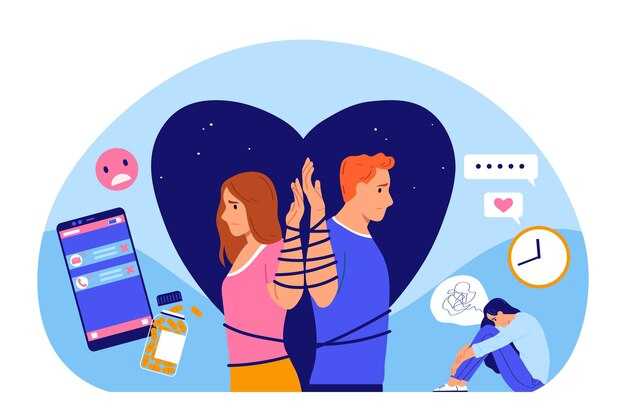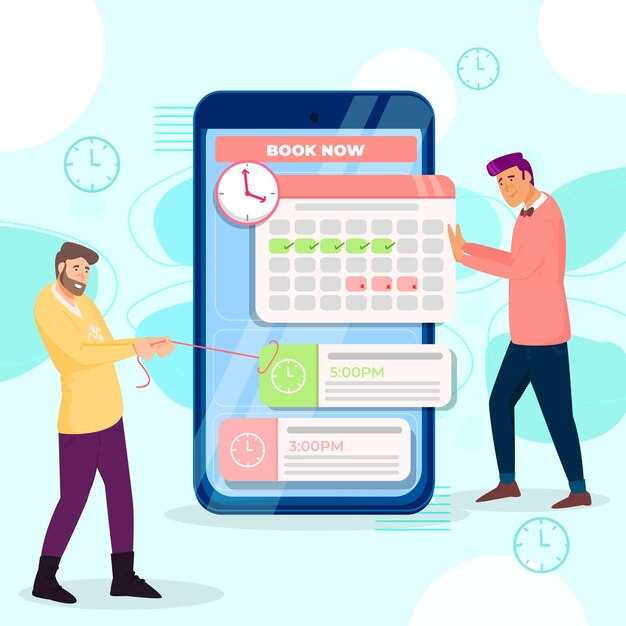Nearly everyone who grew up with trauma develops one very common pattern: a tendency to withdraw — either feeling cut off while around others or deliberately removing themselves from contact — and that’s what I want to explore. Closing people out can seem like the sensible, protective, even loving thing to do when stress and triggers hit, but it can also lock you into a life of stuckness. For people with CPTSD, being around others is often loaded with stimuli that produce dysregulation — by “trigger” I mean anything that throws your nervous system off, makes your emotions feel scrambled, and leaves you feeling unsettled. If social situations routinely dysregulate you, they can feel like a dark basement full of mousetraps you don’t want to step into. At first, pulling back — cancelling plans, ending relationships, ducking out — gives a welcome relief, a moment to breathe and keep your balance. But if isolation becomes your default coping strategy, the chances to belong and connect slowly disappear, and if that closing-in seems desirable, it’s likely your trauma talking. Plenty of people write to say they prefer solitude — “I like being alone, people are awful, I don’t need anyone” — and I get why, especially after severe trauma. Sometimes a period of withdrawal is essential; there are a few folks who can manage long-term solitude and even thrive. But unless you have the financial and practical supports to live entirely alone, isolation only works for a while. Choosing to cut people out isn’t an achievement; it doesn’t make you triumphant over what happened. It removes you from the arena where much of human growth and the good you contribute to the world happens. If you proudly boast about being good at isolating, know that’s not something anyone should have to excel at — there’s a difference between chosen solitude used for restoration and chronic isolation used to avoid pain. It’s healthier to tolerate discomfort with people than to trade away the relationships that have been lost or blocked by your trauma. Feeling sad about missed relationships, struggling a bit with the sting of criticism or exclusion, and yearning for inclusion and support is painful but truthful. That grief and discomfort that drive you to withdraw are the very feelings that, if you allow them to be felt and worked with, will nudge you back toward connection later. If you can learn to heal the triggers that make being with people so hard, you can reconnect, step by step — and I’ll explain how shortly. First, let’s look at why distancing yourself feels so natural and even energizing initially. Isolation is a quick fix for the stress that stems from CPTSD triggers — an argument, an embarrassing mistake, a sense of rejection or judgment, a moment of being criticized, a rush of panic when you feel ugly or out of control. Again, when I say “trigger” I mean something that sets off neurological dysregulation, not just being upset. Dysregulation is a core legacy of childhood trauma: your nervous system goes out of sync, your emotions spike, your thinking scatters, and recovery can take days. Given that price, avoiding triggers by staying away from people is an understandable temptation. There’s also what I call covert avoidance: behaviors that let you appear socially engaged while keeping relationships shallow — avoiding real commitments, cancelling plans, being physically present but emotionally checked out. Putting yourself out there can feel exhausting, like an endless marathon, so it’s tempting to keep everyone at arm’s length or vanish entirely. If you suspect childhood trauma has affected your ability to connect, there are assessment tools you can use — a connection quiz is available on the free tools page of my website and linked in the description below, if you want to check your symptoms. Another reason isolation is so seductive is practical: social situations take energy, so it’s easy to bow out. If you are slightly avoidant, you probably know every plausible excuse to get out of plans — say you’re sick, you have to work, a family emergency — and people accept it. The immediate relief can feel worth the small erosion of integrity. That sense of temporary control is comforting even though it’s really your triggers shaping your choices. It’s like stepping outside for a cigarette when things feel intense: a change of scenery, a deep breath, the illusion of self-care. Everyone wants some breathing space and to protect their boundaries, but when avoidance becomes the habitual route to get these things, it stops working long term. A related trap is telling yourself the isolation is only temporary — you “just need a rest,” a break from a particular person, some self-care time with streaming and snacks. A little of that can be delightful and restorative, but if it’s not balanced with returning to the world — interacting, contributing, admiring others, supporting and being supported — something heavy can settle in, a dread that’s hard to shrug off. You can try to blame people or society or your past, and those reasons are real; yet humans need connection. Even if fitting in is hard and you’ve been deeply hurt, there’s still time to reclaim belonging. Healing can restore the web of connection trauma cut away. So, when you promise yourself you’ll reconnect “soon,” make today the day you honor that promise with one small step. The longer you stay out of the world, the harder it becomes; isolation can pull you downward into behaviors and situations that justify more withdrawal, creating a spiral of overwhelm and permission to stay disconnected. When everything overwhelms you, that’s a sign you’re in a bad spot — it will feel like the world is against you, but often the root is an old trauma wound. Even when your trauma urges you to pull away, it’s crucial to resist that urge and work toward healing and reengagement. The first reason is simple: people matter to your survival and health. You know this intellectually, though some will argue it, but we rely on others for food, infrastructure, and practical help; even if emotional connection felt optional, your immune system, mental health, and physical wellbeing benefit from being around people. When you can be with people without the experience triggering trauma, the effects are stabilizing across life domains. Trauma tends to narrow attention inward; gentle social interaction can break that self-absorption and create space for friendships to form. Connection often moves in a tide: reaching out a little, retreating to rest, and reaching again — a healing rhythm of connect, protect, try, rest. Another upside of connecting is that other people keep your thinking grounded. You may have seen the extreme outcome of long-term withdrawal: older individuals who have become so shut down and un-socialized their emotional responses become sharp and abrasive. I remember a neighbor who would shout at children from his upstairs window whenever we roller-skated on his smooth driveway; he seemed miserable and feral, while perhaps life had simply worn down his social capacities. Isolation can allow negative thinking to snowball because there’s no one to gently reality-check you. Happiness isn’t merely a symptom; it’s part of becoming your true self through growth and usefulness — the small acts of service and presence that make you part of community: a nod to a passerby, checking on a neighbor, running an errand, taking a phone call from a friend. Doing these things benefits both you and others. If you’re in a hospital with no visitors, it can be a stark wake-up call about the need for a network; I’ve been in that place, discharged alone and wishing I could stay because I didn’t feel I had anywhere to go. So consider committing, even in a modest way: “I will make an effort to connect a bit more so I can both help others and help myself.” That’s a foundation for becoming more fully who you are — growth requires friction, interaction, and other people. It may not feel possible now if you’re deeply isolated or superficially “functional but unknown” to others, but here’s the key: as you learn to notice and soothe your triggers, the urge to withdraw diminishes. Gaining mastery over the emotions and physiological reactions that hijack you makes it possible to gently expand your life and connect more often. You’re not alone in this; withdrawal is an almost universal outcome of childhood neglect and abuse. It’s not your fault it happened, but now that you are an adult you can be the agent of healing: you can learn to spot people who aren’t safe for you and tune into who you do want around you — and you can take small steps, at your own pace, to be yourself. Many of us are works in progress who feel better when we begin to address the protective habits we learned. It begins with noticing the places where trauma still interferes with connection. Nobody likes being ignored or excluded, and many people with childhood PTSD endured being left out as children — parents who were absent because of addiction, illness, imprisonment, or sudden departures can create wounds that make adult relationships fraught with anxieties and longings that repel potential stable connections. Abandonment wounds often produce hasty attachments because the nervous system never learned the slow path to intimacy, but you can learn that slower pathway with tools and practice. When you find yourself stuck to someone who mistreats you, the terror of being left again can make leaving feel worse than staying, which is how people become trapped. Abandonment wounds also play out in groups: ostracism, being judged, and exclusion leave deep marks. When an abandonment trigger fires and you “flip out” — reacting with desperate intensity that doesn’t feel like you — that’s often an emotional flashback: a past feeling reappears and overlays the present, making a small current event feel like the original childhood catastrophe. Someone leaving a room while you’re speaking, for example, can feel like being left alone in a way you can barely articulate. Many people who grew up in chaotic households have no coherent memory of specifics from early childhood but do carry body-based, preverbal memories of being neglected: the long cry in a wet diaper, the endless waiting for a parent to return. Those feelings, when reactivated, register as immediate and present, not as a memory, so you react as if the abandonment is happening now. An hour later, when you’ve calmed or dissociated, you may realize you over-reacted and wonder what you’ve done — a pattern many with CPTSD recognize. Similar triggers include the silent treatment and stonewalling, which can be devastating for someone with a history of rejection; at the extreme, the silent treatment can be emotionally abusive, and staying with people who use it without change isn’t advisable. Another trigger is waiting: if you were once left alone in a daycare or sat at a window waiting for a parent who never showed, waiting can bring on powerful feelings of neglect. That kind of trigger can fog your thinking and make you doubt yourself — wondering “is it me?” — and the community of people who understand that pattern can help validate your experience. Jealousy and gaslighting are additional traps, especially in relationships where someone asks you to “just be friends” while behaving in ways that hurt you. You might be told you’re being irrational or old-fashioned for feeling upset — a pattern many of us experienced when we were sensitive kids told to “stop worrying.” It’s reasonable to hold boundaries around actions that violate your expectations of loyalty and care; you don’t have to pretend you’re okay when you’re not. Empty time — unscheduled evenings or long stretches with nothing planned — can also trigger anxiety. Some people overfill their schedules to avoid facing those moments, but solitude can be useful if used for honest reflection and processing: writing down fears and resentments can produce breakthroughs during dark nights of the soul. Paradoxically, closeness itself can be triggering, too: when someone pours intense love on you it can feel overwhelming, as I experienced when my father — dying of ALS when I was a teen — looked at me with enormous sadness and love; the intensity was so powerful it was hard to receive. Grief and love can both trigger early wounds. Watching others seem effortlessly socially at ease can sting, too, sparking comparisons and the feeling that you “didn’t get the memo” on how to be comfortable in company. Though many people appear untroubled, others struggle secretly; still, the sight of others’ ease can activate abandonment fears. Feeling overlooked — like the kid who raises a hand and is passed over — can teach you not to risk asking for attention; feeling judged or condescended to can reflect an internalized sense of not being enough, so the first work is always on yourself to cultivate self-acceptance. Sometimes a person simply isn’t a good fit and you end up with groups or friends who don’t suit you; occasionally the ostracism is real, and that hurts. When you’re healing, you can face your fears and resentments on paper, then with cautious outreach — “Do you want to hang out?” — test the waters and learn that rejection is seldom as catastrophic as your old wounds predict. What can you do about triggers? You can’t stop the world from producing them, but you can change your trauma-driven responses: the shutting down, the lashing out, the withdrawal that aims to limit damage but also shrinks your life. Healing means learning to notice and calm triggers so they stop feeling overwhelming and you can see choices again. The daily practice I teach — writing, noticing, and calming — has helped many people regain such choice; hundreds of thousands are using these techniques. Everybody sometimes does things that harm their own prospects: losing your temper at work, flaking on people who count on you, overeating, staying in destructive relationships — these are examples of self-defeating behaviors. In the model I use, the sequence is trigger → emotion → self-defeating behavior. Triggers will always happen, because they are often caused by other people or external events, so focusing all your energy on trying to eliminate triggers or control others is a losing strategy. A far better focus is on the emotional reaction in the middle. I call three core emotions the “big three” that typically precede self-defeating actions: feeling overwhelmed, feeling lonely, and feeling afraid. Anger often shows up too, but it’s usually a secondary emotion riding on top of overwhelm, loneliness, or fear. When those core emotions spike — when you feel dizzy, numb, flooded with adrenaline, or about to lose control — it’s very difficult to stop a damaging behavior in the moment. That’s why learning to notice and downregulate those emotions before they tip you into action is essential. In people without childhood PTSD, those feelings rise and fall; they’re manageable and don’t spiral. With childhood trauma, they can escalate into full-blown dysregulation: your nervous system behaves like an over-reactive alarm, and the brain’s coordinated activity becomes scrambled so your heart rate and breath go out of sync. When emotions feel overwhelming and urgent, trauma colors your perception and can make you act as if immediate, extreme action is the only solution. Three negative impulses emerge from these emotional states: overwhelm tends to trigger escape; loneliness triggers clinginess; fear triggers the urge to control. Most people have some mixture of the three, with one dominant pattern. Most of the lasting damage from childhood PTSD doesn’t come from the original events alone but from the present-day behaviors driven by these impulses. It’s easier to talk about what happened in the past than to face our own current habits, but your actions now are what will change your life. To change, you’ll need clarity about which self-defeating behaviors you enact when triggered. I’ll summarize some common ones here (and offer a downloadable PDF in the material linked at the end if you want to reflect at your own pace). Common self-defeating behaviors among people with childhood PTSD include: 1) Black-and-white thinking — gravitating toward extremes, polarizing groups and people, or getting locked into ideological battles that damage relationships; 2) Neglecting your body — poor self-care, avoiding doctors or preventive care, or simply not looking after basic hygiene; 3) Addictive relationships with food — overeating, disordered eating, or eating patterns that temporarily comfort but ultimately dysregulate and harm you; 4) Addictive use of media and entertainment — bingeing on screens to the point that sleep, routine, work, or relationships suffer; 5) Dishonesty — hiding truths, lying, exaggerating, cheating, stealing; 6) Work problems — remaining stuck in unsatisfying jobs, not working when you could, overwork, frequent conflict with employers or coworkers; 7) Blame and victim thinking — difficulty seeing your role in problems, persistent bitterness, or damaging others’ reputations; 8) Numbing with substances — alcohol or drug use that interferes with functioning and relationships; 9) Irritability and rage — frequent angry outbursts, road rage, or extreme aggressive reactions; 10) Attracting troubled partners or friends — gravitating toward people who mirror your early caretakers’ dysfunction; 11) Unfulfilling romantic life — avoidance of dating or staying in relationships that lack trust and love; 12) Problems around sexuality — boundary issues, oversexualization, affairs, or sexual behavior that leaves you feeling ashamed but compelled to continue; 13) Fantasy and obsession — romantic fixation (limerence), stalking, or dream-life that replaces real effort toward goals; 14) Avoidance — both overt withdrawal and covert avoidance that looks like participation but lacks real connection; 15) Financial mismanagement — living beyond means, debt, gambling-like decisions driven by trauma-affected risk assessment; 16) Repetition compulsion — unconsciously repeating patterns and choosing partners who recreate parental dysfunction. If you want to change, start by familiarizing yourself with this list and choose a single behavior to work on rather than trying to tackle everything at once. Support helps, and one effective route is learning to calm the triggered emotions that push you toward the behavior. Among the triggers people name most often, abandonment sits at the top: it takes over perception and the nervous system so thoroughly you can’t always tell whether your fear of someone leaving is grounded in present reality or in a reactivated childhood wound. All CPTSD triggers create some degree of emotional dysregulation, and learning to reregulate is essential for real healing. That’s why I’ve created materials like a Disregulation Boot Camp — a 20-day course designed to teach techniques for calming CPTSD triggers so you can gain mastery over emotions, thinking, and physiology and live in greater harmony with yourself. The course includes worksheets and guided practices that help you notice what’s happening when you’re triggered and practice responding differently. If abandonment is a prime vulnerability for you, the approach in that program can give you tools and hope. There is also a four-week coaching program focused on re-regulation; if you want to participate, consider registering soon — spaces fill up. You can find details on my website (I mention it in the video and include links in the description below). Abandonment is one of the most primal triggers because human beings are wired to depend on reliable caretakers and social inclusion; in pre-modern times, being excluded from the tribe literally threatened survival. For many with childhood PTSD, the fear of being left alone morphs into catastrophic imaginings — fear of being old, homeless, or dying alone — that are proportionally extreme to most present circumstances. My own early life included experiences that formed strong abandonment wounds (my mother’s repeated absences and my father’s early death), and rejection would throw me into physiological panic that felt like a toxic chemical rushing through me. That visceral terror would lead to dysregulation I didn’t know how to stop. In therapeutic work, it helps less to spend hours tracing the origins of a trigger than to practice noticing the bodily and emotional sensations it produces now, to identify what in your adult life reliably sets it off, and to track how you’ve recovered in the past. One key technique is writing out your fears and resentments in a daily practice: when you put the terror, the shame, the rage, or the hopelessness into words, the intense preverbal feeling that lives in your nervous system becomes more accessible to healing. Writing touches parts of the brain that speaking often does not, and it can calm those ancient alarms enough for thinking and choice to return. Once the physiological intensity subsides, you can consider options without feeling enslaved to panic: maybe you forgive, maybe you communicate a boundary, or maybe you decide to end a relationship — those are choices you can make from a clearer place. The aim is to free yourself from the automatic physiological hell that abandonment triggers can produce, so you no longer behave out of that terror and instead can live in which all options, including connection and safety, are genuinely available to you.


 What to Do When Social Interactions Overwhelm You (4-Video Compilation)">
What to Do When Social Interactions Overwhelm You (4-Video Compilation)">


 Keep God out of Relationships.Right?">
Keep God out of Relationships.Right?">
 5 Trauma Habits That Are Secretly Ruining Your Life">
5 Trauma Habits That Are Secretly Ruining Your Life">
 Scheduling “Intimacy” Agree or Disagree?">
Scheduling “Intimacy” Agree or Disagree?">
 Why You Miss the Red Flags (Until You’re Already Trapped)">
Why You Miss the Red Flags (Until You’re Already Trapped)">
 How to stop HURTING your partner.">
How to stop HURTING your partner.">
 If An Avoidant Does These 4 Things, It’s Game Over For Your Relationship">
If An Avoidant Does These 4 Things, It’s Game Over For Your Relationship">
 What To Do When You Don’t Know What You Really Want">
What To Do When You Don’t Know What You Really Want">
 5 Signs An Avoidant Is Secretly Testing You When They Want You in Their Life.">
5 Signs An Avoidant Is Secretly Testing You When They Want You in Their Life.">
 My Wife QUIT Doing My Dishes! || How to push your wife to the breaking point, a step by step guide.">
My Wife QUIT Doing My Dishes! || How to push your wife to the breaking point, a step by step guide.">
 How You Can Reduce the Emotional Intensity, and Protect Yourself From Abuse">
How You Can Reduce the Emotional Intensity, and Protect Yourself From Abuse">